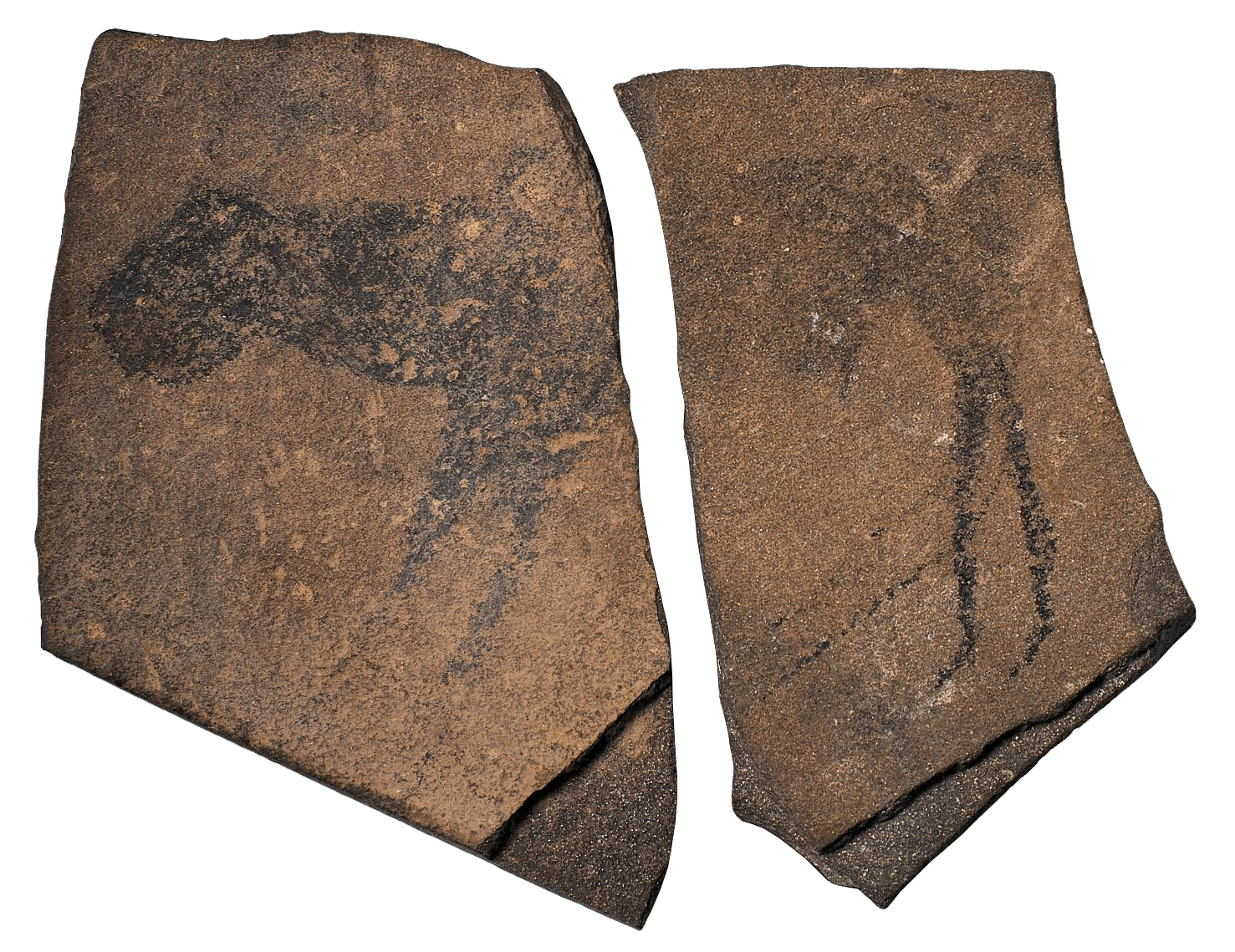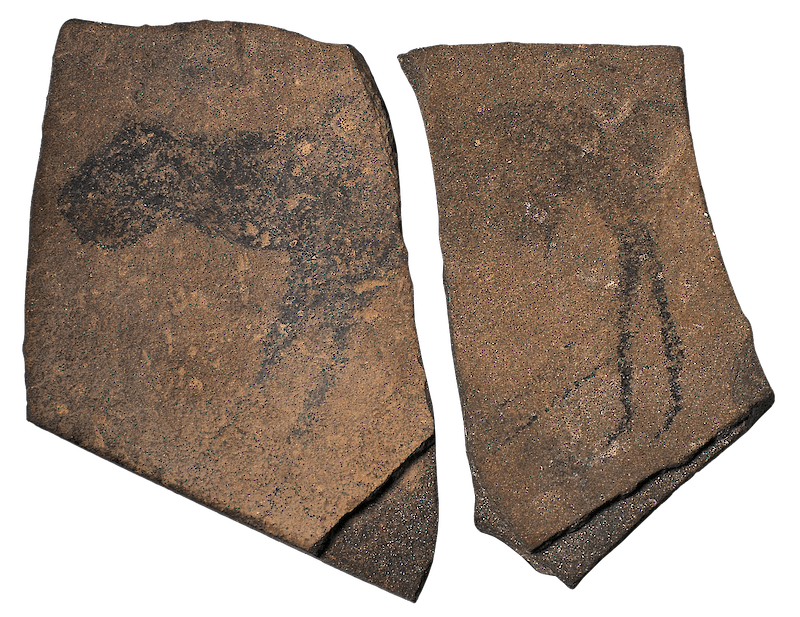


In 1969, the year Led Zeppelin published their first album, the German archaeologist W.E. Wendt uncovered a creative work made by Paleolithic humans 25,000 years ago.
In a wide, deep cave overlooking a dry gorge in the Hun mountains of Namibia, Wendt painstakingly removed layers of sediment from the cave floor in a series of excavations spanning more than three years. Wendt referred to the cave as Apollo 11 in honor of the moon landings that took place during his years of excavations. And his work was rewarded. Wendt uncovered seven, palm-sized gray-brown quartzite carrying depictions of animals in charcoal, ocher, and white pigments. By dating the surrounding material, the stone fragments were estimated to have been created between 25,500 and 25,300 BCE, making them the oldest known art works at the time of their discovery.
While more recent discoveries are pushing the earliest dates of human creativity back to 100,000 or even 120,000 BCE, the Apollo 11 Cave Stones are still among the most compelling examples of ancient artwork, with the striking silhouette inviting wild speculation. Is it a feline form, and if so, why does it seem to have the horns of an Oryx, a type of large antelope, and is that the penis of a water buffalo? Are its human-looking hind legs a result of artistic ignorance, or does the image represent an incidence of therianthropy, a human shape-shifting into a cat?
